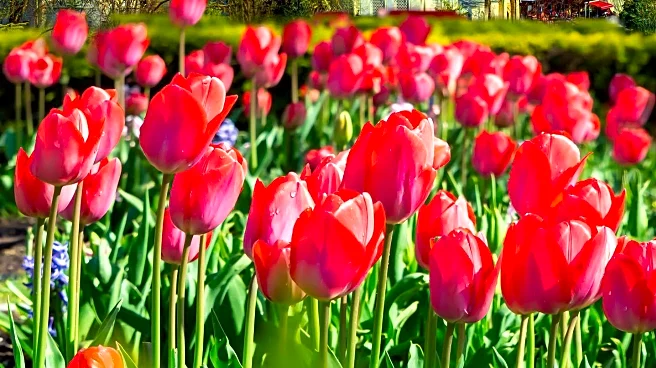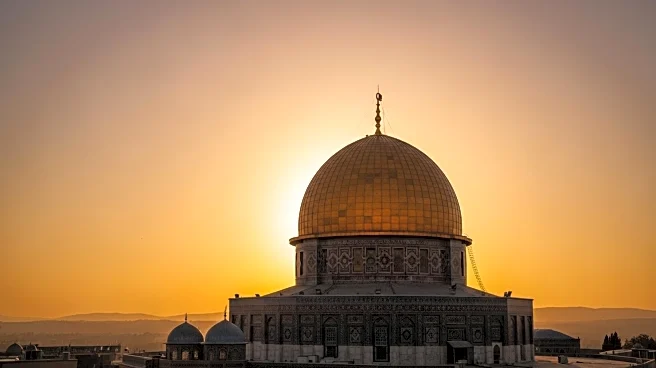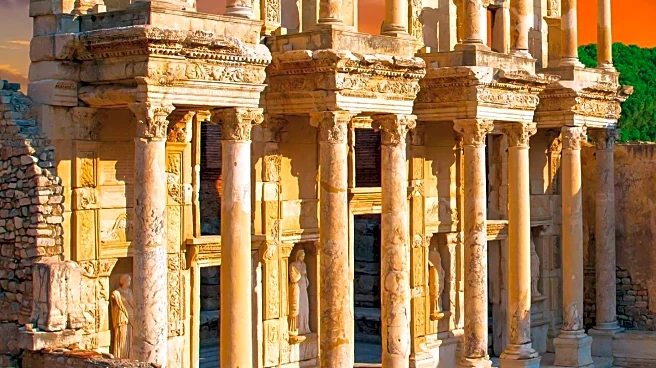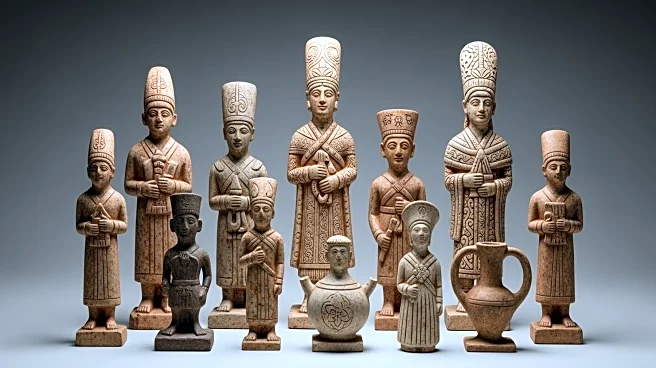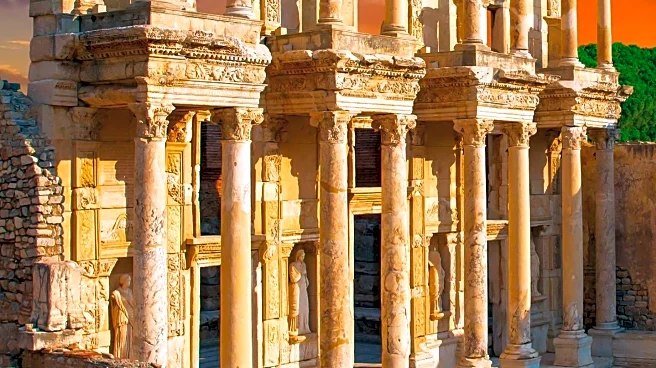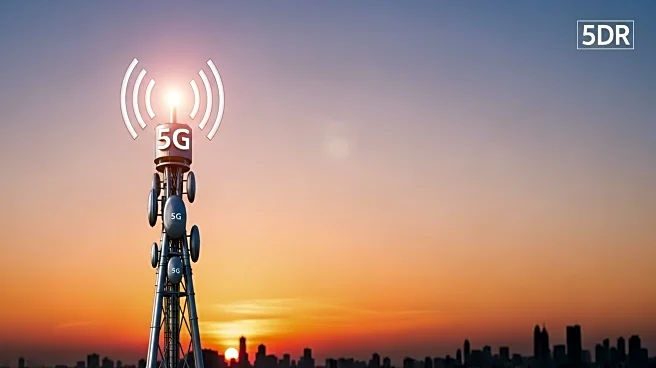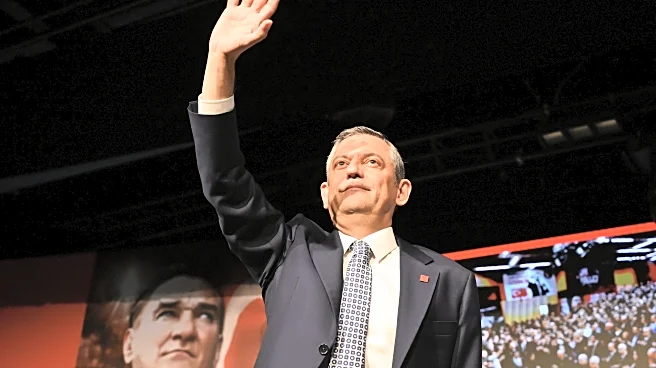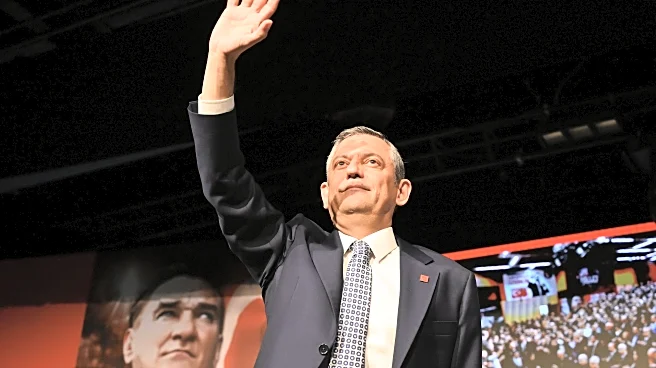What's Happening?
Hagia Sophia, a monumental structure in Istanbul, has undergone significant transformations throughout its history. Originally built as a church in 537 CE during the Byzantine Empire, it became a mosque following the Ottoman conquest in 1453. The building, known for its architectural grandeur, has served various roles, including a museum, before being reconverted into a mosque in 2020. The structure is renowned for its blend of Christian mosaics and Islamic calligraphy, symbolizing cultural coexistence. Despite its religious significance, Hagia Sophia remains a major tourist attraction, with ongoing debates about its status as a mosque or museum.
Why It's Important?
Hagia Sophia's transformation reflects broader cultural and political shifts in Turkey and the region. Its reconversion into a mosque in 2020 was met with international criticism, highlighting tensions between secular and religious interests. The building's status is emblematic of Turkey's historical and contemporary identity struggles, impacting cultural heritage preservation and religious tourism. The ongoing debate over its use underscores the complexities of managing historical sites that hold significance for multiple faiths and communities.
What's Next?
The future of Hagia Sophia involves continued preservation efforts, including a three-year conservation project to enhance its earthquake resilience. The building's dual role as a mosque and museum may continue to evolve, influenced by political and cultural dynamics within Turkey. International stakeholders, including UNESCO, may play a role in advocating for its preservation as a cultural heritage site, balancing religious practices with tourism and historical education.
Beyond the Headlines
Hagia Sophia's story is intertwined with myths and legends, contributing to its mystique and cultural significance. These narratives, while sometimes fictional, reinforce its status as a symbol of conquest and religious transformation. The building's preservation amidst political changes reflects broader themes of resilience and adaptation, relevant to discussions on cultural heritage management in conflict zones.
